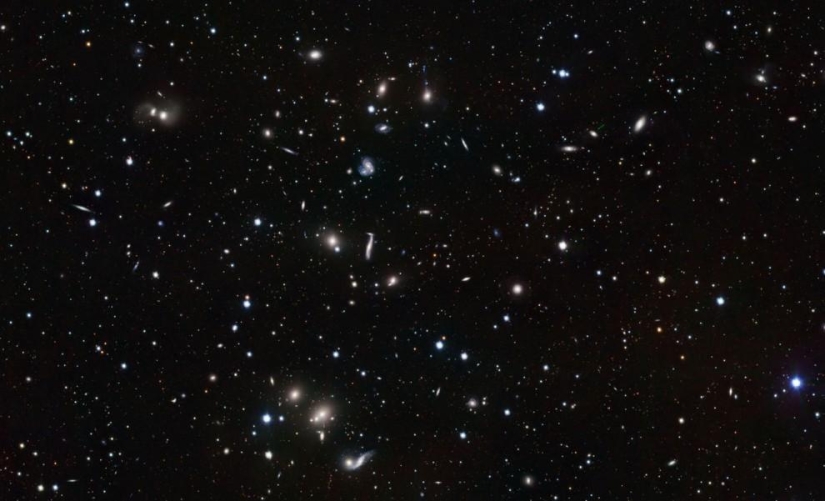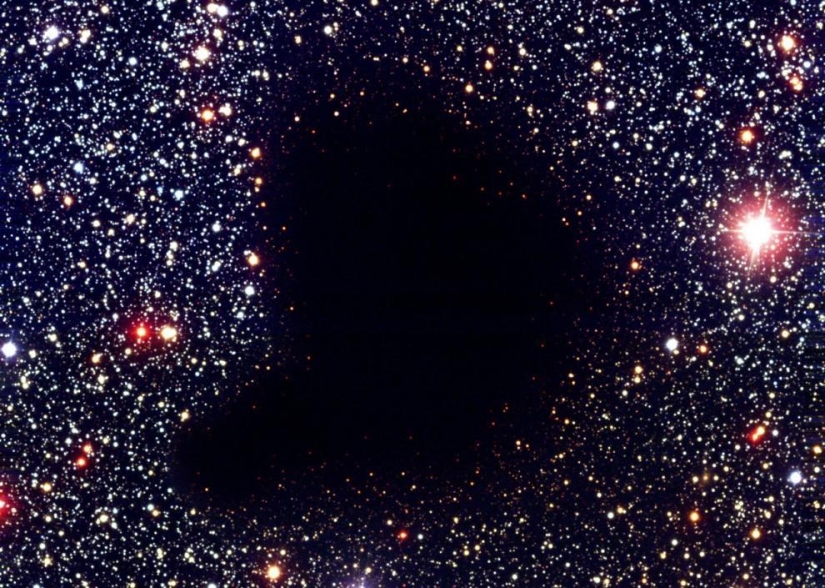European Southern Observatory
Categories: Space
By Pictolic https://pictolic.com/article/european-southern-observatory.htmlThe European Southern Observatory (ESO) has built several sets of telescopes and observatories on mountaintops in the Atacama Desert in northern Chile. The Atacama Desert is an ideal location for such structures, as it sits far from the city lights, high above sea level under cloudless skies 350 days a year.
The European Southern Observatory is an interstate research organization that was founded in 1962. The organization includes 15 countries. ESO has been conducting astronomical observations in the skies over the Southern Hemisphere since 1966 and continues to develop. The organization owns the La Silla Observatory, which houses the New Technology Telescope; the Paranal Observatory with the Very Large Telescope (VLT); the Llano de Chajnantor Observatory, which houses the APEX submillimeter telescope, and the ALMA astronomical complex. This photo essay presents photographs of ESO observatories, as well as images taken by the telescopes of these observatories.
(Total 30 photos)


1. This image of the Helix Nebula (NGC 7293) was composited from images taken by the Wide Field Imager (WFI) astronomical camera attached to the 2.2-meter MPG/ESO telescope at the La Silla Observatory in Chile. (ESO)

2. A full moon sets behind the Very Large Telescope (VLT), which belongs to the Paranal Observatory in Chile. (ESO/Gordon Gillet)

3. View of the ALMA astronomical complex on the Chajnantor Plateau in the Atacama Desert from the nearby summit of Cerro Chico. (ESO/Babak Tafreshi)

4. A laser beam from the Very Large Telescope (VLT), which helps astronomers explore deep space, rushes into the night sky over Chile. (ESO/G. Huedepohl)

5. Globular cluster NGC 2257 has been around for many billions of years, but still shines brightly. NGC 2257 is on the periphery of the Large Magellanic Cloud, a satellite galaxy of the Milky Way. (ESO)

6. Antennas of the ALMA astronomical complex on the Chajnantor Plateau in the Atacama Desert, Chile. Some famous celestial bodies are visible in the night sky. Seeing this clear sky, it becomes clear why ALMA and a number of other astronomical observatories are located in Chile. (ESO/Babak Tafreshi)

7. The ALMA correlator is one of the most powerful supercomputers in the world. It is located at high altitude in the Andes in northern Chile. (ESO)

8. Scientists work in the control center of the radio telescope of the ALMA Observatory in the Atacama Desert, 1,500 kilometers north of Santiago, Chile, on October 1, 2011. (Martin Bernetti/AFP/Getty Images)

9. The Sombrero Galaxy, one of the most famous spiral galaxies in the universe, is named for its resemblance to the headdress of the same name. It is located in the constellation Virgo at a distance of about 30 million light years from Earth. (ESO/IDA/Danish 1.5 m/R. Gendler and J.-E. Ovaldsen)

10. This image of the Horsehead Nebula was composited from three images taken with the 8.2-meter KUEYEN telescope at the Paranal Observatory on February 1, 2000. (ESO)

11. View of numerous interacting galaxies in the Hercules cluster of galaxies. The image was taken with the VLT Survey Telescope. (ESO/INAF-VST/OmegaCAM)

12. Residential complex for astronomers of the European Southern Observatory (ESO) near the Paranal Observatory, September 15, 2008. The apartments are underground to minimize environmental impact and protect the night sky from artificial lighting. Some episodes of the James Bond film “Quantum of Solace” were filmed here. (Martin Bernetti/AFP/Getty Images)

13. Swimming pool in the residential complex for astronomers of the European Southern Observatory (ESO) near the Paranal Observatory, September 15, 2008. (Martin Bernetti/AFP/Getty Images)

14. Construction site of the astronomical complex ALMA (Atacama Large Millimeter Array). The ALMA complex will consist of at least 66 radio telescopes located at a distance of 150 meters to 16 kilometers from each other. (ESO/NAOJ/NRAO/W. Garnier)

15. Spanish Prince Felipe and his wife Princess Letizia visit the Paranal Observatory in Cerro Paranal, Chile, November 24, 2011. (Reuters/Felipe Trueba)

16. A new Very Large Telescope (VLT) instrument, the KMOS spectrograph, is being tested at the UK Astronomy Technology Center in Edinburgh before being shipped to Chile. The image shows 24 robotic arms. (STFC/UKATC/ESO)

17. The bright tail of Comet McNaught in the sky behind the Very Large Telescope, 2007. (ESO/HHHeyer)

18. Antennas of the radio telescope of the astronomical complex ALMA on the Chakhnantor Plateau, October 1, 2011. (Martin Bernetti/AFP/Getty Images)

19. A worker cleans the 8.2-meter main mirror of the Antu telescope, which belongs to the European Southern Observatory, with solid carbon dioxide. (ESO/Y. Beletsky)

20. The black hole at the center of the galaxy Centaurus A emits radiation. (ESO/WFI, Optical; MPIfR/ESO/APEX/A.Weiss et al., Submillimeter; NASA/CXC/CfA/R.Kraft et al., X-ray)

21. The Barnard 68 Nebula in an image composited from images taken by the Antu Telescope (ANTU) and the FORS1 instrument in March 1999. (ESO)

22. Very large telescope of the Southern European Observatory on Mount Paranal in the Atacama Desert in northern Chile. (ESO/G.Huedepohl)

23. Traces of stars in the sky above the 3.6-meter telescope of the European Southern Observatory, which has a high-precision HARPS spectrograph designed to search for exoplanets. (ESO/A.Santerne)

24. The Tarantula Nebula in an image taken by the VISTA infrared telescope of the European Southern Observatory. (ESO/M.-R. Cioni/VISTA Magellanic Cloud survey)

Barred spiral galaxy NGC 1365 in an image composited from images from the European Southern Observatory's DANISH TELESCOPE 1.5-meter telescope in Chile on September 22, 2010. The galaxy is located 60 million light-years from Earth and is twice the size of the Milky Way galaxy. NGC 1365 is one of the largest galaxies known to astronomers. (Reuters/ESO/IDA/Danish 1.5 m/ R. Gendler, JE. Ovaldsen, C. Thsne, and C. Feron)

26. Construction of one of the 12-meter radio telescopes in the Atacama Desert, Chile. (AP Photo)

27. As soon as the sun sets behind Chile's Atacama Desert, the Very Large Telescope of the European Southern Observatory begins to catch rays of light from the most distant corners of the universe. (ESO/Jose Francisco)

28. An image of the reflection nebula Messier 78 taken by the Wide Field Imager of the 2.2-meter MPG/ESO telescope at the La Silla Observatory in Chile. (ESO/Igor Chekalin)

29. A cluster of bright newly formed stars near the dark star-forming region Lupus 3, which is located at a distance of 600 light-years from Earth in the constellation Scorpio. This image was taken by the 2.2m MPG/ESO telescope at the La Silla Observatory in Chile. (ESO/F.Comeron)

30. View of the Paranal Observatory of the European Southern Observatory in the Chilean Atacama Desert. In the lower right corner is the Very Large Telescope (VLT), near which the VISTA telescope can be seen. In the distance, in the background, rises the Andean volcano Llullaillaco, whose height is 6739 meters. (ESO/M. Tarenghi)
Keywords: Astronomy | Research | Sky | Observatory | Telescope | Chile
Post News ArticleRecent articles

While the sun practically disappeared from the sky above the Arctic Circle and the night seemed endless, the Vikings prepared to ...

This is for us, people, the New Year is one of the most important holidays of the year. But for animals, it's all a fuss, running ...
Related articles

Sex — is not only enjoyable, but also a very useful exercise. Orgasm improves the General condition of the organs and ...

It is well known that giving up bad habits, physical activity and good sleep can prolong a person's youth. More recently, another ...

Counting sheep while trying to sleep? A Tik-Tok user shared a much more effective way to quickly go into the arms of Morpheus. The ...

If it seems to you that the New Year holidays are being celebrated somehow incorrectly, then you definitely haven't seen these ...